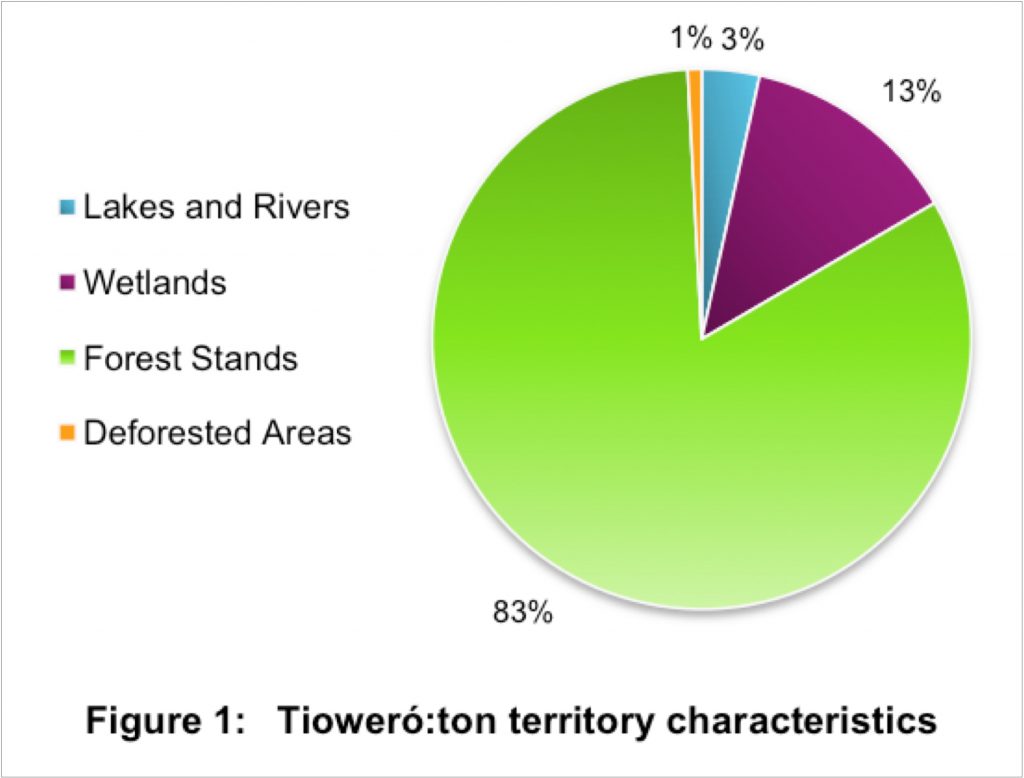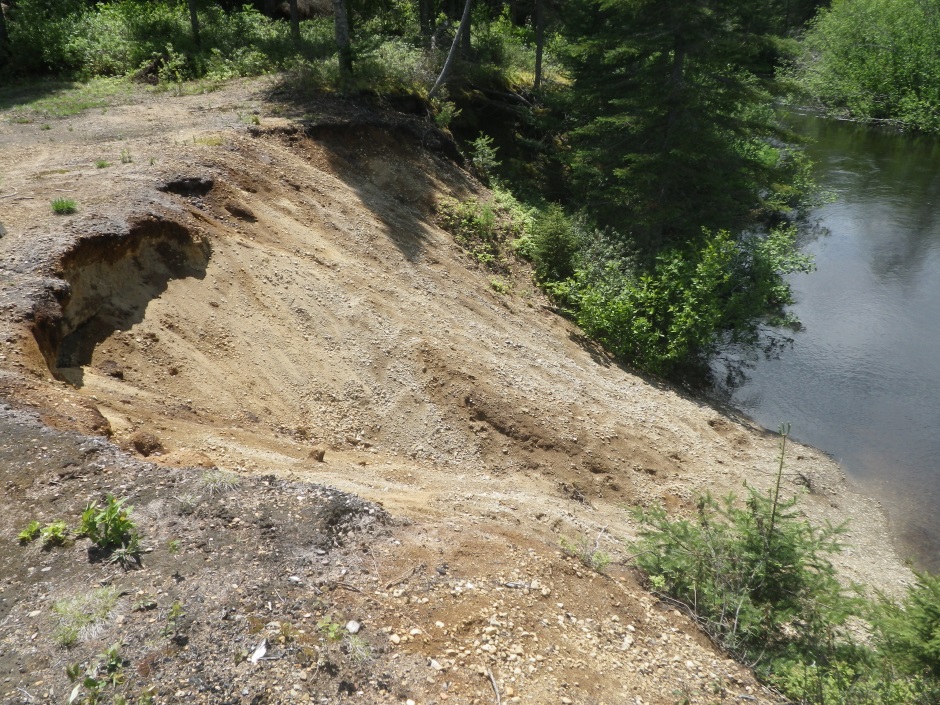Tioweró:ton is Kahnawà:ke’s second home. It is a territory shared with Kanehsatà:ke for hunting, fishing, gathering medicines and picking berries and is located near the town of Ste. Agathe, in the Laurentian Mountains. Recent years have shown an increase of visitors wishing to enjoy the tranquility and beauty of Tioweró:ton. Cabin and road construction, and certain recreational activities, are putting pressures on the natural environment and impacting the tranquility that was once enjoyed.
In 2016-2017 an Ecological Mapping Project was initiated. The main purpose of the Ecological Mapping Project was to define and map different land uses in Tioweró:ton such as hunting, fishing and medicine gathering areas, as well as environmentally sensitive areas. The information gathered is being used to identify areas that should be protected, determine appropriate areas for potential new cabin development, and develop recommendations towards a sustainable land use plan for the territory.
The study involved a review of previous studies, fieldwork, and community consultation in the form of interviews, a survey, a kiosk and a presentation at a Tioweró:ton community meeting.
The Ecological Mapping Project revealed that the environment in Tioweró:ton is relatively undisturbed, except for the areas located near cabins and roads. Forest stands cover 83% of the territory (mainly hardwood species). Wetlands cover 13% of the territory. 3% of the territory is made up of lakes and rivers, including 69 lakes and ponds covering a surface area of approximately 629 acres.

Aerial photos were examined to assess the changes in Tioweró:ton over the past 20 years. Some of the most noticeable changes from 1995 to 2015 included:
- the number of cabins increased from 124 to 268;
- the number of out-buildings increased from 24 to 169;
- the total deforested areas surrounding cabins increased from 20 to 74 acres!
From the field work conducted in 2017, 10 cases of excessive deforestation around cabins were identified. Deforestation exposes forest soils to erosion and the migration of sediments to lakes and watercourses, which in turn can damage fish spawning grounds and wildlife habitats. Vegetation, especially along shorelines, should be maintained in order to prevent erosion and preserve important habitats.
 A deforested slope eroding into the creek
A deforested slope eroding into the creek
The community consultation confirmed the importance of preserving natural areas, hunting and fishing areas, as well as berry and medicine gathering areas in order to ensure the continuity of these traditional activities and honour the original intent of the territory. Cabin construction and associated human activities are inevitably putting stress on the environment. Concentrating cabin construction near existing cabin areas is one way to reduce the fragmentation of natural environments, and reduce the pressures on hunting, fishing and gathering areas.
Several follow-up studies are currently being considered. Through these studies we hope to gain a better understanding of the different habitats in Tioweró:ton and the activities that are threatening them so we can work together to protect, enhance or restore them for the future generations.